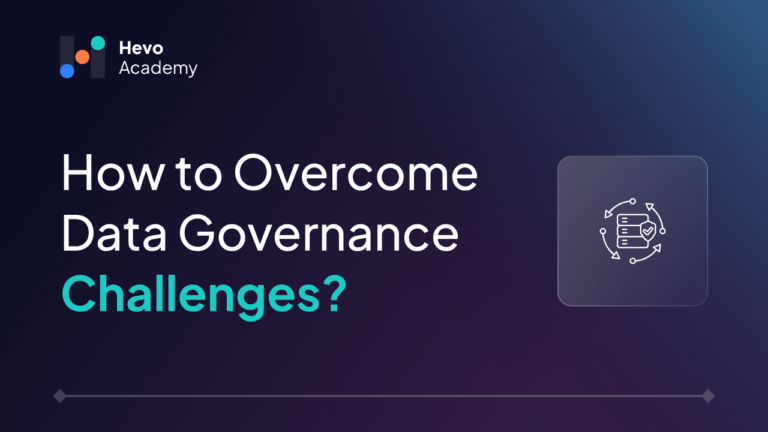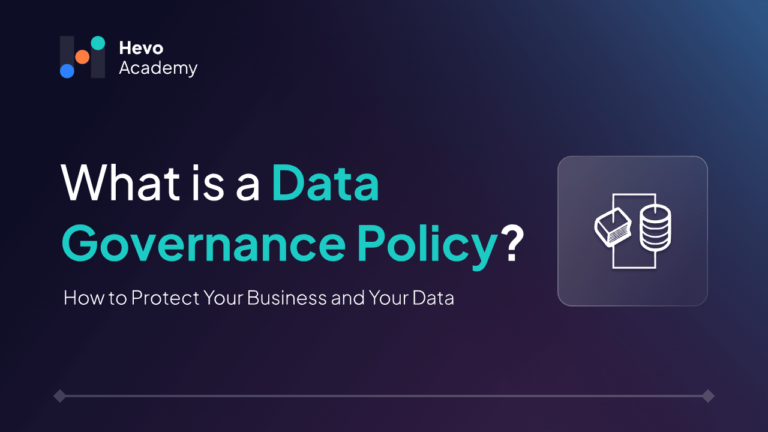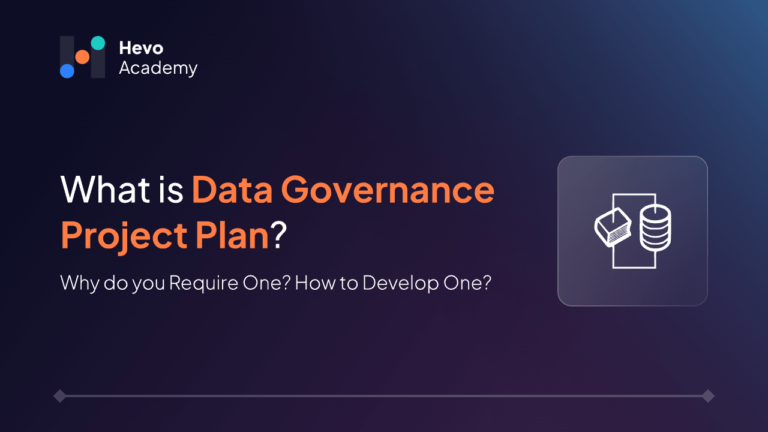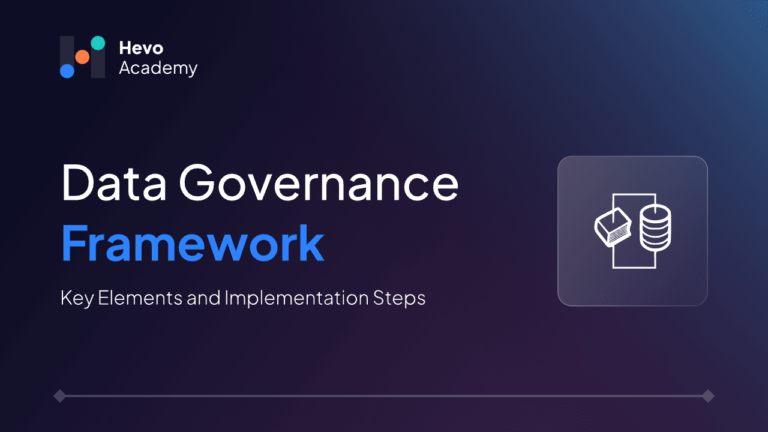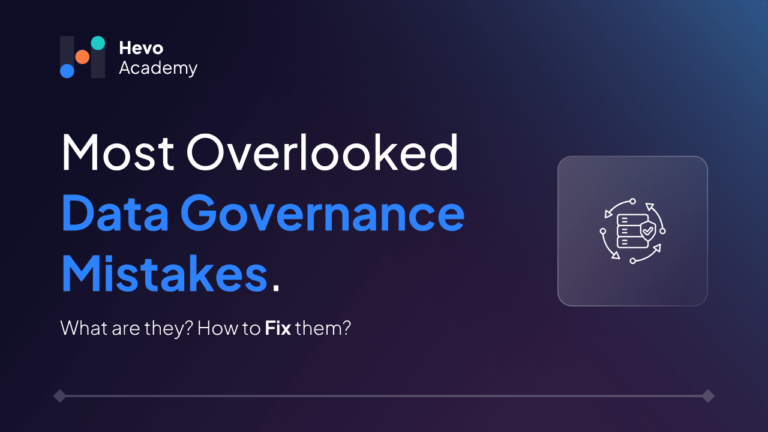We used to view data simply as something to organize into tables for analysis. Today, data is far more expansive, touching every aspect of our lives and transforming economies and societies. Those who control it—whether companies or governments—hold immense power. However, it also presents significant data governance challenges. Addressing data governance challenges is now critical for ensuring data integrity, security, and compliance in a world where data drives daily decisions and societal changes.
Table of Contents
What is Data Governance, and why is it needed?
Data governance is a process that determines who can take what actions with what data, when, under what circumstances, using what methods. – James V. Luisi
It ensures the data is accurate, secure, and usable throughout its lifecycle. So, it is about ensuring the data is in the proper condition to succeed with its business initiative. Hence, it is not just technical jargon but also business jargon.
Data Governance is essential for business organizations since it establishes confidence in data, helping a company improve its decisions, reduce risks, and consequently increase its business efficiency. A deep understanding of what data governance is can help organizations identify and mitigate common challenges, such as maintaining data accuracy, enforcing policies, and managing data access. As Gartner’s data governance frameworks suggest, understanding and implementing data governance can help businesses address challenges like data accuracy, policy enforcement, and access control.
The Data Steward evaluates data quality daily and defines data quality rules. The Data Owner makes policy around data, which is more of an executive-level role. IT equips Data stewards with the right tools and technologies to navigate the data. Data governance is about the group of people from business and IT working together to create successful business initiatives. Data lineage is integral to data governance, enabling data stewards and owners to track and ensure the quality of data from its origin to its final use.
Data governance should be the load-bearing wall in your house of business initiatives. Take a look at the core components of data governance to understand the concept in detail.
Common Data Governance Challenges
1. Poor Data Quality
While working with data, issues can arise when fetching data from a source or in the business process.
To fix this, we must set up quality rules in production if any such scenarios arise. In addition, organizations should have a tool to monitor such issues and enable reporting.
Check out data quality in detail to understand why it is important.
Examples of poor data quality
- For a particular field in the customer database, 75 percent of records are blank.
- A vendor table accumulates hundreds of duplicate rows over time.
- While testing an application, a developer created thousands of dummy records and forgot to delete them after the test ended.
For data to be valuable, organizations should maintain high data quality. Organizations should form the processes to ensure data accuracy and completeness. They should use tools, technologies, and quality software to automate quality assurance processes. Apart from these, they should have established policies to detect and respond to any data quality issues that may arise.
2. Siloed Data
Siloed data is a common problem when dealing with data from multiple sources.
We may need to collect data from various sources, and the data should fit together coherently. For example, in the case of a merger between two insurance claim companies, we have claim data from business unit A and the same from business unit B. To merge this, we need teams working on it, analyzing things field by field.
One approach is to collect data of different types from different sources and technologies for unique uses by various business departments. With proper data governance tools, metadata of different data types can be connected and uniformly seen.
You then map the schema and metadata of your data and keep it updated more dynamically rather than trying to capture static information. You replace your metadata by collecting it from the database instance itself, then bring it into an environment where you can analyze it and make it sound.
Metadata management is one important step for data governance. Of course, business users don’t care whether the data is from MySQL, SQL Server, Oracle, Mongo DB, or any other platform. They only want to know how data flows through their systems and at what point it reaches them.
3. Poor data context
Another challenge of data governance implementation is understanding data relevancy. Data governance requires individuals to understand the various aspects of data, identify which aspects are essential and relevant, and store only the appropriate data. It can be a complex and complicated process as data is constantly changing.
You can read our blog on how to create an effective Data Governance Roadmap to learn more.
For instance, consider a dataset labeled “Final Sales.” Does that refer to “Gross Sales” or “Net Sales”? Misunderstanding such labels can lead to inaccurate reporting and decision-making.
Or, if a batch of records is presented as sales opportunities but actually represents marketing-qualified leads (MQLs), this misclassification could cause misalignment between sales and marketing teams.
To overcome this, set up a forum or Slack channel for users to ask questions and doubts and gain a thorough understanding of the data.
4. Data Security And Privacy
Data Security concerns the systems and structures that support a data governance program. Compassionate corporate data must have procedures to restrict unauthorized access, and additional resources such as firewalls must be incorporated.
Depending on the organizations, precautions against potential cybersecurity threats have to be taken, and provisioning management of such security threats is critical, too. In addition, organizations need to implement some provisions regarding periodic or regular reviews of their data security measures and procedures and recommendations on any changes that may be required for such measures and procedures.
5. Lack of Data Control
Another element of data governance enforcement that should be addressed is data accessibility. Organizations must set up policies and procedures to ensure that their data is available for the users who need it. They should also consider how the users will need the data, whether it will be API access or web-based.
6. Maintaining Compliance & Limited resources
Organizations should regularly review and update their data governance policies to ensure compliance with standard-defined industry regulations.
Data Governance demands a lot of effort and resources to ensure organizations comply with laws and regulations. Organizations must also invest in training and development to ensure their employees know the latest industry standards and practices. Implementing data governance may require special skills and dedicated teams and resources. This can be done by applying automation and intelligence to the executions.
Also, take a look at the Data Governance Framework to overcome the challenges you’re facing effortlessly.
Conclusion
While implementing data governance, it is important to handle issues that arise and have a blueprint to tackle them. The best way to overcome these challenges is through preparatory work and the right knowledge.
For organizations facing these data governance challenges, a four-pronged approach is appropriate:
- People — The right people with defined ownership, responsibility, and sponsorship.
- Process — Install the right processes to back and sustain all that takes place in the background of data governance.
- Technology – These are your intelligent tools that help mitigate the risks and accelerate the opportunities.
- Culture — Data governance can be embedded into your company goals and included in how you measure success.
More importantly, they integrate data governance data across different stakeholders, requiring increased communication and cooperation among all parties, pushing forward the worth of data governance as a strategic business venture. That way, you will foster a context that supports data governance initiatives and enables their positive impact on your organization’s performance. Organizations must strive for data governance maturity to realize the potential of data assets.
An approach suggested is for organizations to adopt a data governance maturity model to advance their data management initiatives, increase data quality, and prompt more positive organizational decision-making.
Take Hevo’s 14-day free trial to experience a better way to manage your data pipelines. You can also check out the unbeatable pricing, which will help you choose the right plan for your business needs.
Frequently Asked Questions
1. What are the problems with poor data governance?
Poor data governance leads to inconsistent data quality, security risks, compliance issues, and inefficient decision-making. It can result in data silos, lack of data accessibility, and potential legal or financial penalties due to non-compliance with regulations like GDPR or CCPA.
2. What is the core of data governance?
The core of data governance is ensuring that data is accurate, secure, accessible, and compliant with regulations. It involves establishing policies, procedures, and responsibilities for managing data quality, privacy, and availability, enabling organizations to make informed decisions and maintain data integrity.

